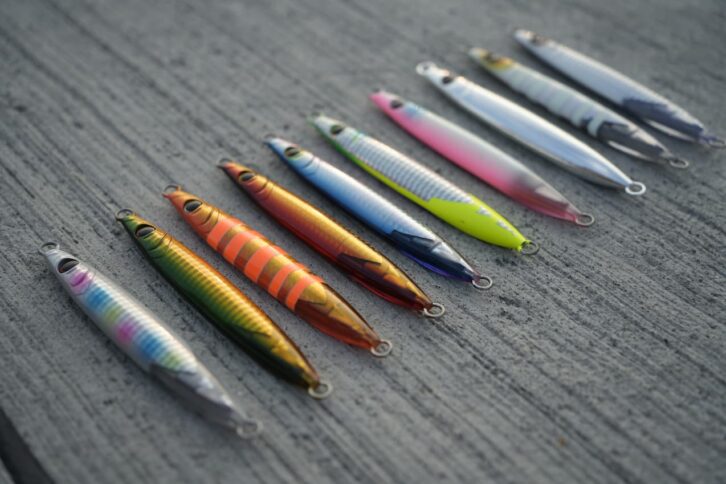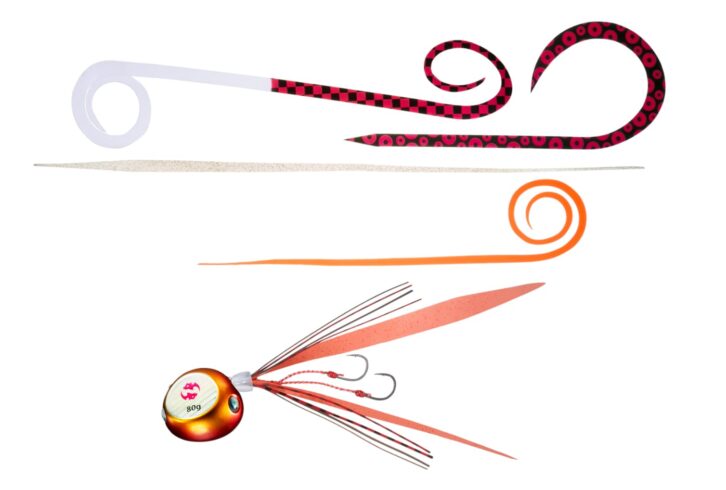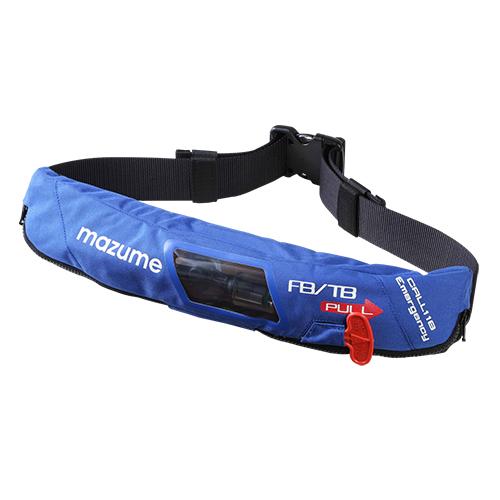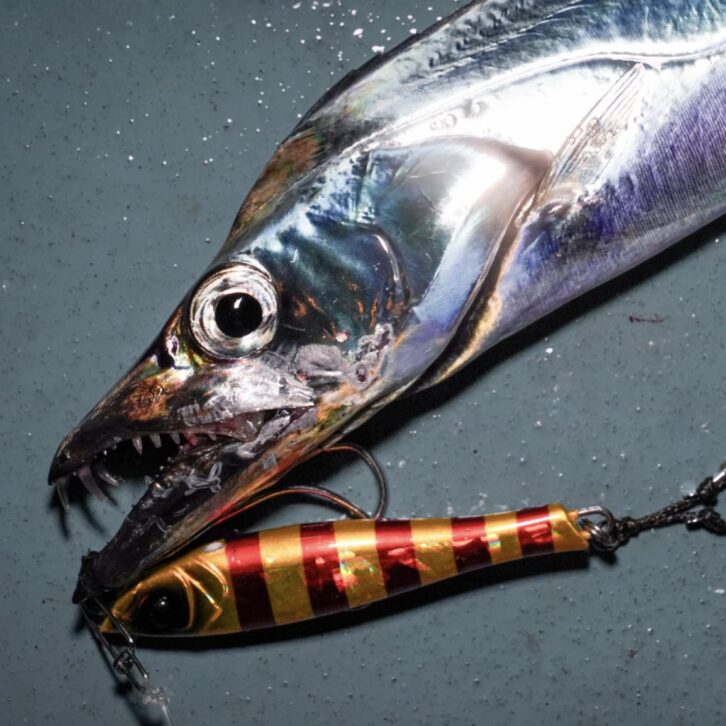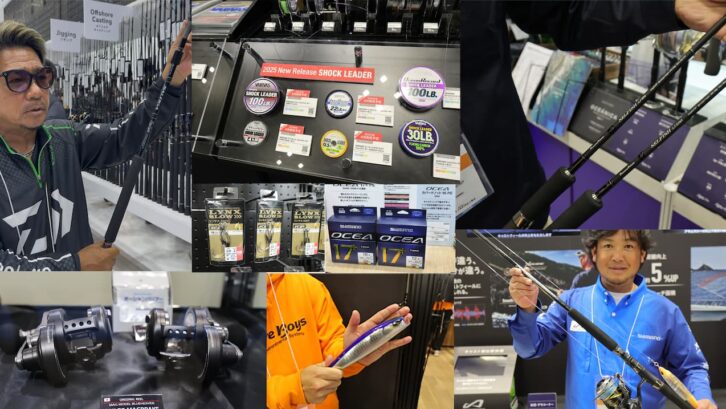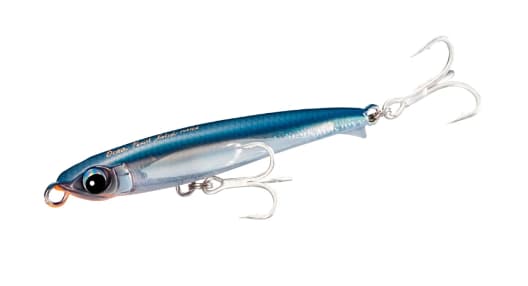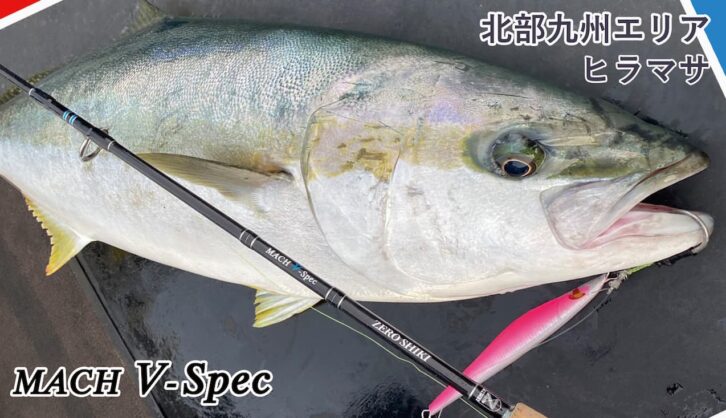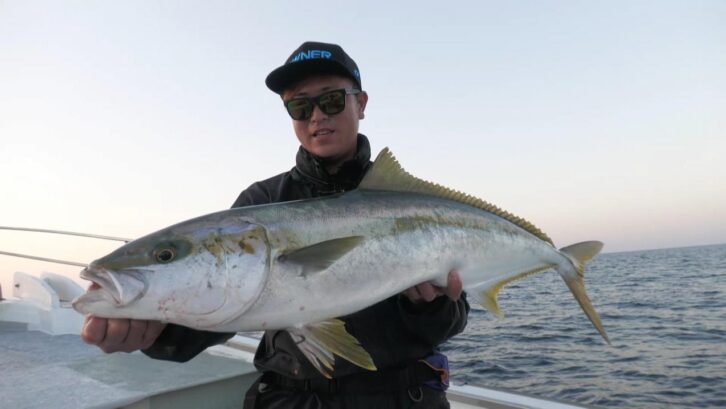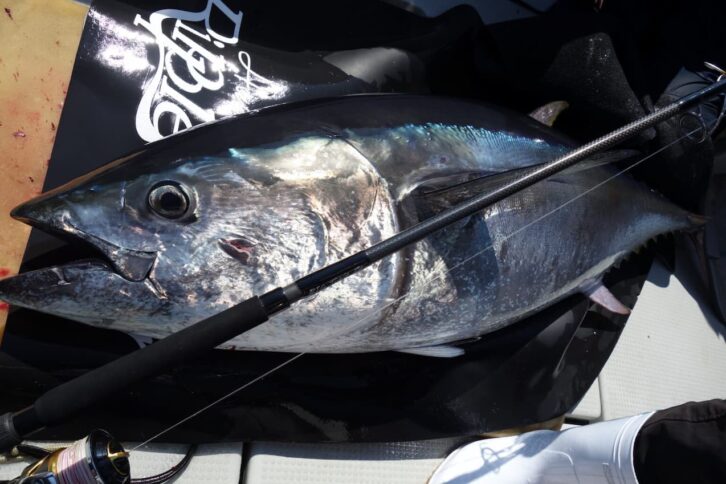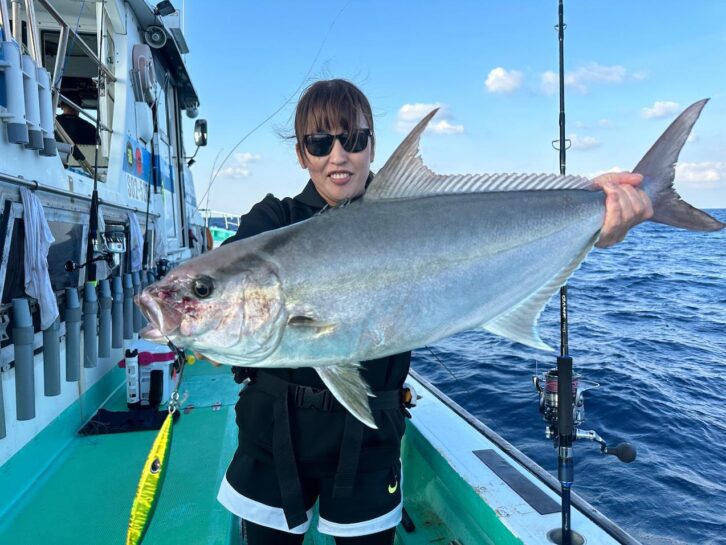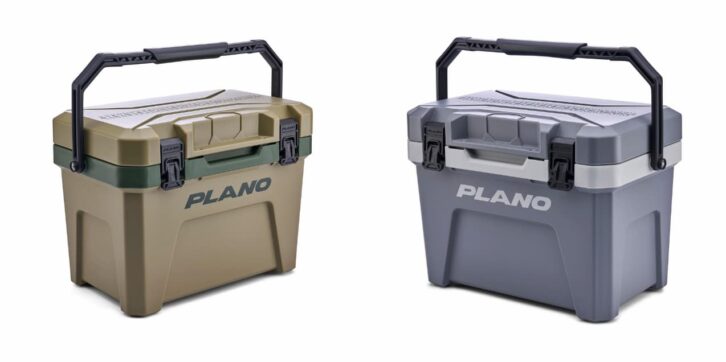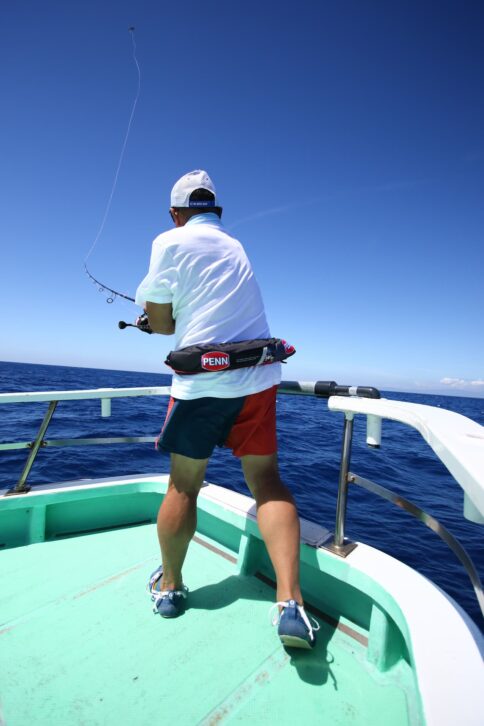The fishing method that escaped the biggest pinch
Tip Run off the coast of Shima, Mie Prefecture A Secret Strategy in Harsh Conditions with Rapidly Falling Water Temperatures
FishingLover Tokai's tip-run fishing trip was filmed off the coast of Shima, Mie Prefecture. The member is Takeshi Ota of Crazy Ocean, a pioneer in offshore fishing that created SLJ and Tip Run fishing. Mr. Naokazu Naka is involved in product development at the company. Mr. Toshiyuki Tsui, a field tester for the company who works mainly in Fukui Prefecture. And Aiyuna Iga, the company's field advisor, who goes by the nickname "AYUCHIE. The target was set at 2 kg, but the sea conditions were terrible. But there was a secret plan to overcome the situation!
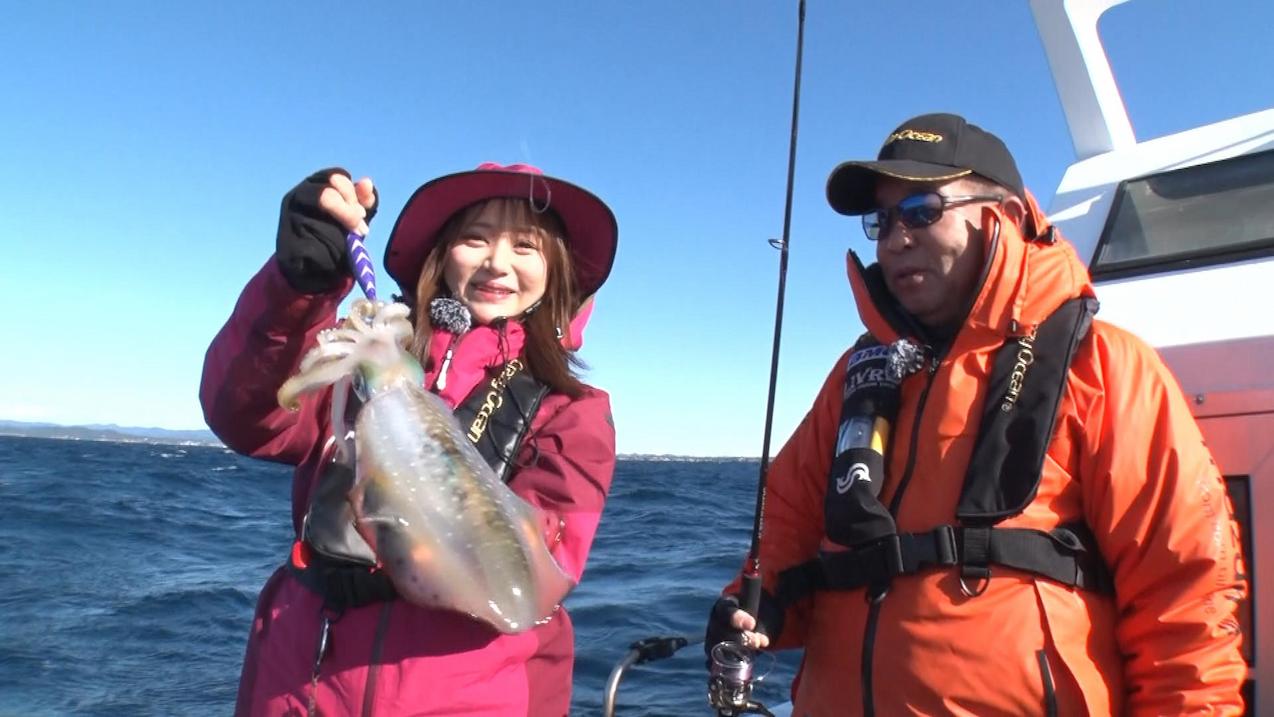
INDEX
What is the Difference between Eging from Shore and Tip Run?
As veteran tip-run anglers know, the difference between tip-run fishing from shore and offshore tip-run fishing is that tip-run fishing allows anglers to appeal to squid for a long time at the point where they are present and make them bite. When eging from the shore, the angler usually lands the squid lure on the bottom of the boat after casting, then shucks the lure, lets it drift by staying, lands it on the bottom again (sometimes without landing it on the bottom), and shucks the lure repeatedly. However, in most cases, the spot you really want to target will be passed by a single landing, shucking, and stay.
Tip-run fishing allows you to explore a wide range of spots. Therefore, there are many chances to encounter squid in a single cast. Generally, tip-run fishing is based on the dotted-deck method, and boats are always drifting to new points. The boat is always drifting to a new point, so it is efficient to take the bottom 2~3 times in one casting and retrieve it if there is no bites.
The depth of the water at this point was 30-60 m. In recent years, it is said that even in midwinter, the lowest sea water temperature off Shima never drops below 17°C due to the warming of sea water temperatures, but on that day, the strongest cold wave of the season arrived a few days before the shooting, and the water temperature dropped below 15°C in some places. This was the worst situation for targeting bluefin squid.
Mr. Ota explains how to lure squid in these conditions.
First, once the squid lands on the bottom, you jerk the reel and let it rise to the surface, then stay there. When the squid lands on the bottom again, reel in the reel handle five to six times while jerking the reel to the surface and stay there. In winter, a long stay is effective to appeal to inactive squid. The bite will appear when the reel stays in place. Even if you get a small bite, give it a quick jerk. It is often said that the tip of the spear returns to the tip when you tip-run, but most of the time the tip returns to the spear when you tip-run vertically, so when the current is flowing, you get more bites than the tip returns.

We were fishing in conditions with northwest winds blowing at more than 10 mph and water temperatures below 15°C (59°F) in some places. How do squid fishing experts overcome the worst conditions?

Doterasuru is a method of fishing in which the boat is driven by the wind and tide without using the engine. The boat is driven sideways to the point, so anglers can fish alongside on one side of the boat.
Tiprunner Hibiki No. 3.5″ to be released this summer
When the northwesterly wind was blowing at more than 10 mph and the angler was in a helpless mood, “Ayu-Chi”, who was using the purple/green Tip Runner Hibiki No. 3.5, which will be released this summer, had a hit! The “Tip Runner Hibiki” is a highly appealing model equipped with rattles, which attracts squid from a wide area with its sound attracting effect. Developed exclusively for tip-runs, the Tip Runner Hibiki has been tested for speed of fall, lightness of jerking, darting sharpness, stability in running water, posture when stopped, and hooking ability, etc. After further testing, the model has been matured and evolved into a commercial product.
When using the “Tip Runner Hibiki,” Ayuchii decided that the sinker weight he normally uses (usually up to 30g) was too heavy, so he added a 60g sinker. The total weight was increased to 90g to cope with the bad conditions of targeting deep water.
After that, Mr. Naka got a bite once with Tip Runner No. 3 (horse mackerel/purple) + Ocean Sinker V 30g, then followed up with a hit. Mr. Tsui got a hit with a Tip Runner No. 3.5 (horse mackerel/gold) help rig (using a No. 20-30 sinker used for squid metal). Mr. Ota was the only one who had no hits until the end of the day, but finally he had a hit using Tip Runner #3.5 (horse mackerel/purple) with a 60g sinker. Despite the poor conditions with no hits on the other boats, everyone was able to catch fish.
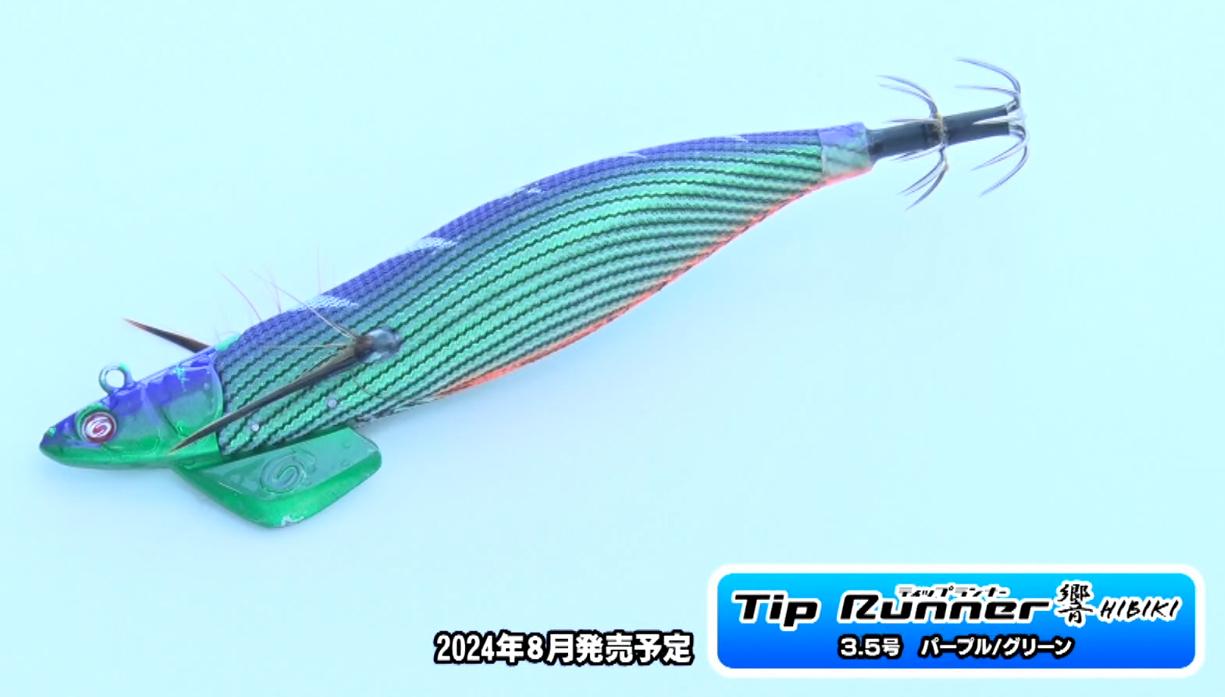
Purple/green of “Tip Runner Hibiki No. 3.5” to be released this summer. The first catch was made by “Ayuchii,” who believed in the color recommended by the captain and continued to use it!

Mr. Naka and Mr. Tsui followed with a hit. The fountain was strong because of its nice size. Mr. Naka dropped the size of his squid eggs, while Mr. Tsui used a helpful rig and a 60g sinker, as if he were an expert in this field.
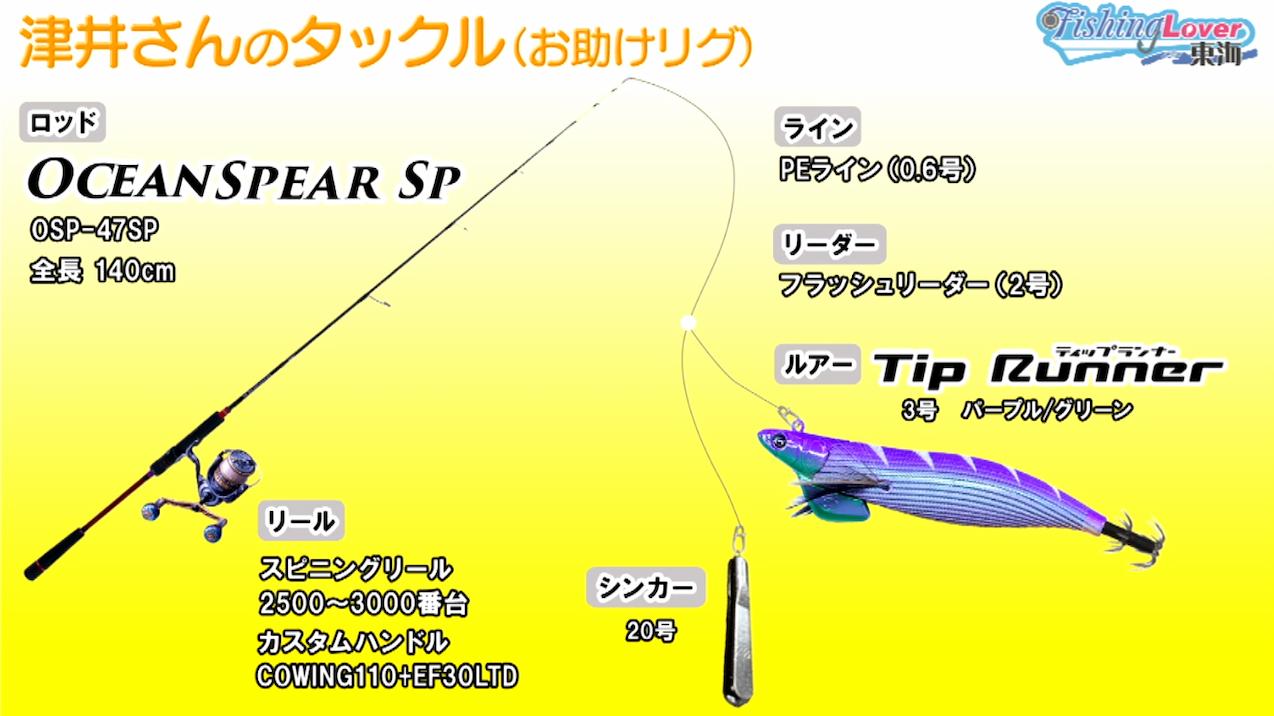
Mr. Tsui used a rescue rig. He used a heavyweight sinker and an Ocean Spear 47SP rod for squid metal.
Rod selection was the key?
In order to cope with the harsh conditions this time, each of us tried various fishing methods, but basically we used egis and rigs that were made to be weighted be-weighted.
In such a situation, it is possible to select a rod for squid metal fishing rather than using a tip-run rod. The feature of Crazy Ocean’s squid metal rods is that they allow anglers to fish in the same way as tip-run fishing. Therefore, Crazy Ocean’s squid metal rod “Ocean Spear Series” can be used for heavy weight tip-run fishing in such a situation.
Ayuchi used Ocean Spear spinning rods 47SP and 53SP, which were the prototypes of Ocean Sword Vertex. The difference between the Vertex and the Ocean Spear is that the Vertex has a maximum weight of 75g, so the Ocean Spear spinning model is used when the maximum weight is exceeded.
When using heavyweight squid or rigs, use the Ocean Spear, which has one rank more power, to create a situation in which there is room for the tip to catch even the most delicate bites.

Mr. Ota was the only one who did not catch any fish until the end of the day. Just when he thought his first fishing trip of the year would end with no fish, he got a bite, and his body reacted instantly and he hooked the fish!
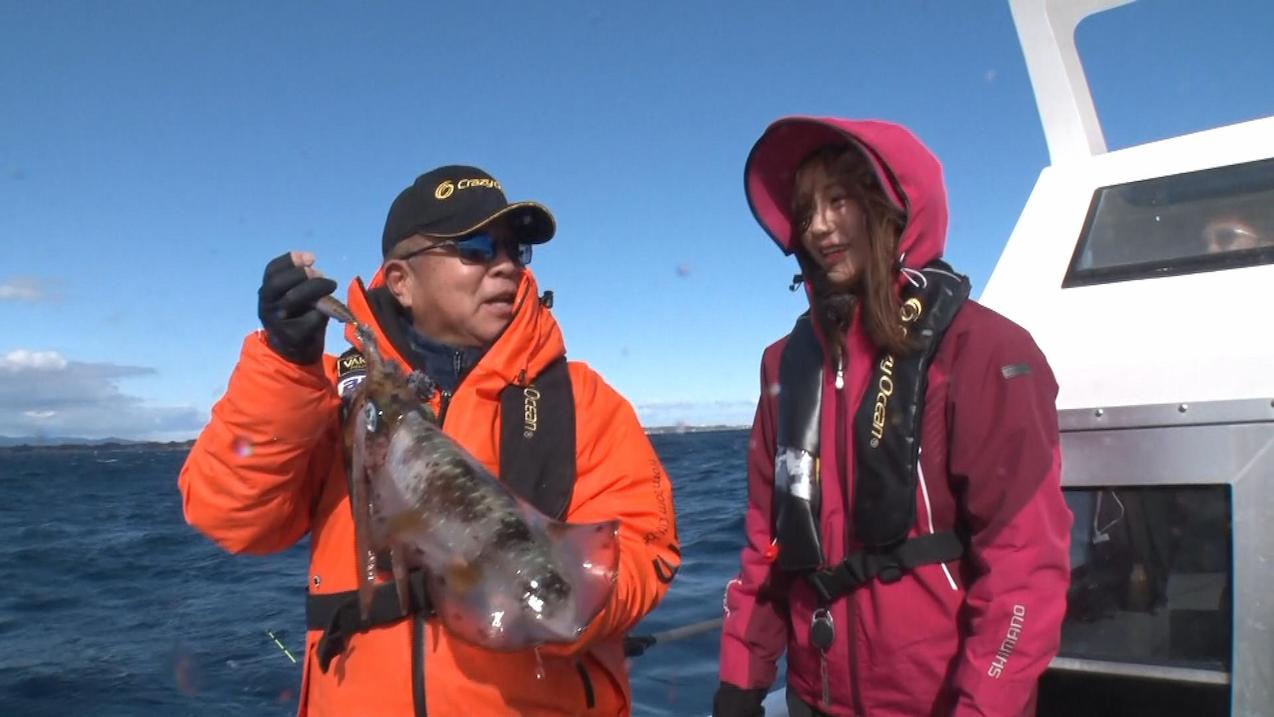
Mr. Ota caught a nice-sized squid at the last minute. Strong winds were blowing until the end, but in the end, everyone on board caught a squid!
Click here for the program information of Fishing Lover Tokai.
https://fishinglover-tokai.com/report126/
If you want to see it on video, click here.
https://locipo.jp/creative/ab737e27-4742-497b-a724-00d4ad8a10b7?list=a24f93b1-4ad9-4b27-ad1a-7dddbb1a8586
For more information about tackle, click here
https://crazy-ocean.com/itemlist_category/tiprun


